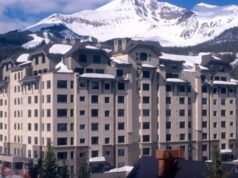
This year, the lodging industry will continue to face the growing demand of delivering exceptional guest experiences while embracing sustainable development. This will be compounded by the need to manage rising operational costs, competitive market pressures, and the increasing expectation to integrate innovative technologies that enhance both energy efficiency and guest satisfaction.
Yet the industry is also experiencing a renewed sense of optimism, thanks to the continued post-pandemic rebound and a recovering demand for wider travel. This surge has encouraged developers and operators to invest in new projects and property upgrades, particularly those focusing on creating more sustainable, energy-efficient, and guest-centric experiences. With travel trends shifting toward wellness, eco-consciousness, and unique, localized stays, the hotel industry is poised to take advantage of these growth opportunities.
Today, as travelers prioritize eco-conscious accommodations, all types of hotels are under the same pressure to integrate energy-efficient systems, renewable energy sources, and sustainable design elements into their properties. At the same time, construction costs remain high, and some lending requirements can create financial hurdles for new developments and renovations.
To address these challenges, many hotel development projects are turning to Commercial Property Assessed Clean Energy (C-PACE) financing as a strategic solution. By providing long-term, low-cost funding for energy-saving and green building improvements, C-PACE allows developers to meet sustainability goals while preserving capital and enhancing property value.
Lowering the Overall Cost of Capital
Given the current challenging financing rates, C-PACE financing has become a transformative tool that enables developers to fund energy-efficient (and resiliency) projects and building upgrades. The good news is that a growing number of developers are using sophisticated capital management approaches—leveraging innovative financing tools like C-PACE to creatively and strategically lower the overall cost of capital while bridging capital shortfalls.
By understanding how to layer C-PACE financing alongside traditional debt, equity, and tax credits, developers can optimize their financial structures to support both their sustainability goals and bottom line. This growing level of comfort in sophisticated financing is enabling more and larger-scale projects to move forward, even in challenging economic conditions.
At PACE Equity, over $6.3 billion in energy-efficient commercial developments has reduced more than 1.4 million metric tons of carbon emissions. This includes well over 150 projects, but it represents a massive impact. Its significance is encouraging because it signals to the rest of the industry that the right low-carbon financing options are changing developers’ thinking.
There are two key approaches to driving impact: 1) Gathering and presenting the data that substantiates your effectiveness, and 2) Fostering meaningful behavioral change. Innovative financing solutions like CIRRUS Low Carbon financing from PACE Equity are combining C-PACE with a low carbon building verification, and this is the piercing edge that is creating behavioral change.
An In-House Low Carbon Engineering Team
Developers now understand the time to think about efficiency and resiliency is in the design phase; they now see the value to tenants and impact to property value when they earn a green building certification. They’ve discovered that small updates will help them qualify for lower finance rates. Working with a financing company that includes an in-house low carbon engineering team helps optimize the funding amount while minimizing the financing rates.
The Orbit Hotel by Wyndham began life as housing for the NASA Glenn Research Center in the 1960s and is now transformed into a 54-unit boutique hotel in the Trademark Collection. The project recapitalized its stack using C-PACE funding. The hotel boasted upgrades of electrical, lighting, HVAC systems, and plumbing upgrades to improve the energy use and overall Energy Use Intensity. Since its opening in 2021, The Orbit is saving 4,800 metric tons of carbon emissions each year.
Another unique recapitalization project took place in New Mexico at an innovative hospitality retreat center. A total of $10.2 million in CIRRUS Low Carbon C-PACE financing, or 32 percent of the total capital stack, was used after construction to reclaim equity and take advantage of the financing tool’s long-term, fixed-rate, non-recourse capital. By refinancing, the developer was able to leverage the cost of previously installed energy efficiency measures to access the low-cost financing while saving 600 metric tons of carbon emissions annually.
As the C-PACE industry continues to expand, expect to see more tailored financing solutions become available to meet the evolving needs of developers and hotel property owners. A more sustainable and energy-efficient future for the green lodging industry is not just a possibility—it’s a reality.
Beau Engman, Founder at PACE Equity, is recognized as a leader in the drive for sustainability in the built environment. Through top level executive roles with the nation’s largest energy service company, nonprofits, and prominent private equity firms, Engman has consistently led efforts to break down barriers to energy efficiency in the private sector. In addition to serving as the founder of PACE Equity, Engman serves on the board of C-PACE Alliance, a nonprofit organization focused on promoting and implementing PACE around the country.







